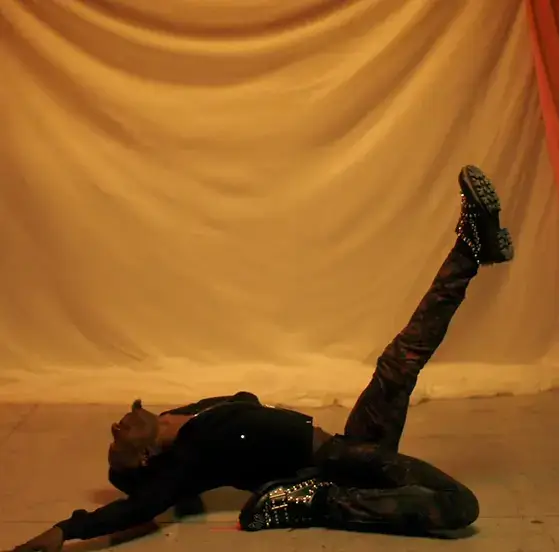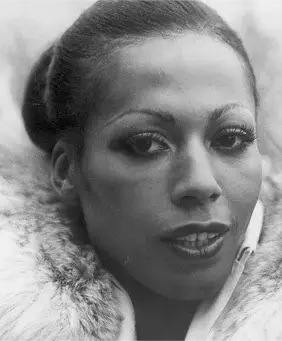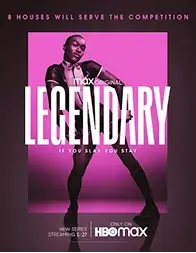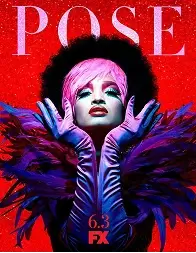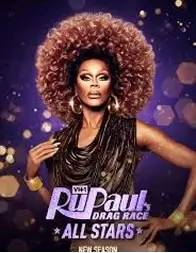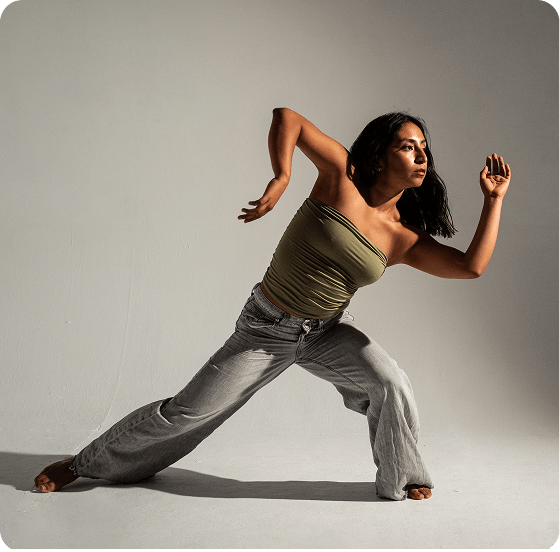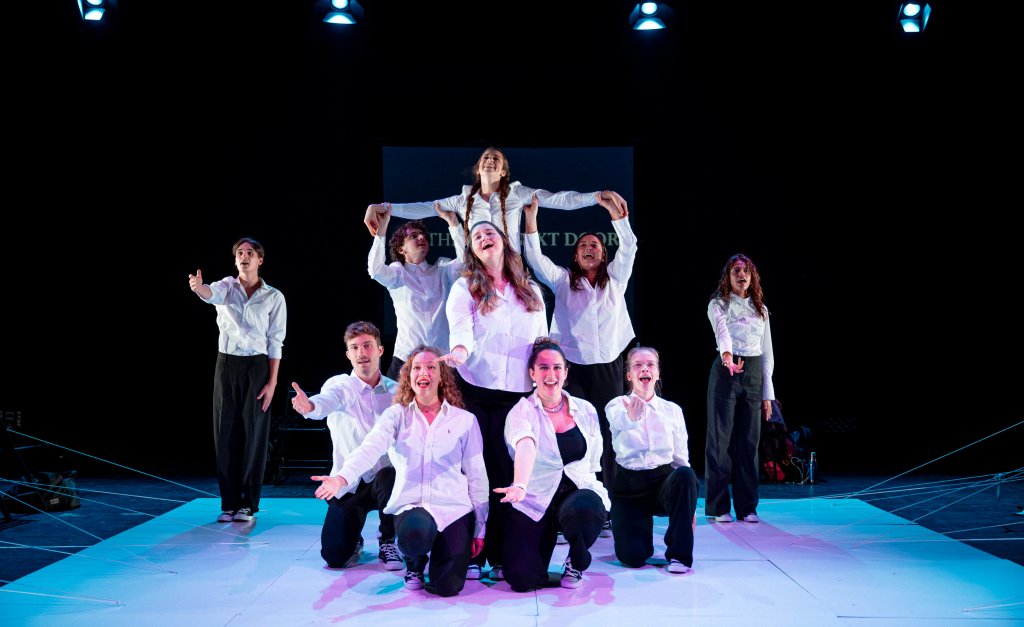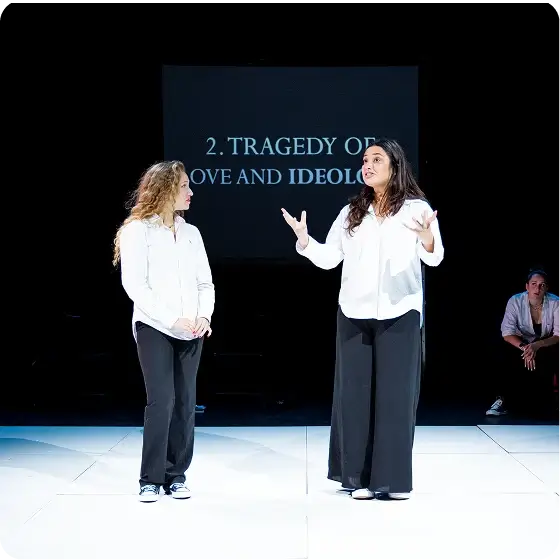One doesn’t need to look too hard to see the influence of vogue on current mainstream pop culture, and while on the one hand it is exciting to see queer culture represented so predominantly in the mainstream, on the other it raises questions around what is lost when this happens. To trace the history of a subcultural form’s influence on the mainstream is also to trace the history of a process by which the mainstream removes subcultural forms from their original context and appropriates them for purely aesthetic and (usually) financial purposes – and often without due credit or compensation to the originators. So I hope this article will be read as both a celebration of Vogue’s influence on mainstream popular culture, and a critique of the process by which that has happened.
I write this article, not as an expert on vogue per se, but rather as a queer dance researcher interested in the complex interplay between queer subcultures and mainstream cultural production.
A brief history of Vogue
When we talk about ‘vogue’ we are really talking about two main aspects. First, Vogue dancing, is the physical dance form itself. And Secondly, Ballroom – aka Vogue Balls – is the cultural and social context out of which that dance form emerged and developed.
Drag balls began in the late 18th century, very often in secret, as social spaces for queer people to gather and explore alternative forms of gendered expression. This is one space from which the art of drag emerged and is often considered one of the first places where the term ‘drag queen’ came into use. Although technically these were diverse, multiracial spaces, Black and Latinx queens often experienced racism and discrimination. In 1972, frustrated with the racism of these spaces, Lottie and Crystal LaBeija founded an alternative ball in Harlem, New York. It was called “The First Annual House of LaBeija Ball,” and it marked the beginning of Ballroom as we now know it today.
Conceived as a space to embrace and celebrate difference, the Harlem Balls developed into a form that continues today: events that are part club, part fashion show, and part community gathering. Structured somewhat like beauty pageants, participants compete in various categories, such as ‘realness’, ‘face’, ‘body’, or ‘butch queen first time in drag’. They compete within familial structures known as houses (more on this below). Balls are hosted by an emcee, and contestants are rated by a panel of judges, made up of prominent community members, who give each contestant a score out of ten. ‘Tens across the board’ is a common phrase in mainstream parlance that originated in Ballroom culture, to denote a contestant receiving a perfect score for their category from all the judges. A contestant, house or house mother or father, becomes ‘legendary’ once they have won a number of times over an extended period of time, following that they might become an ‘icon’ in recognition of their achievements and service to the Ballroom scene.
Houses
Houses, often named after fashion houses or icons (e.g. House of Mugler, Balenciaga, or Versace), functioned as chosen families. Led by house “mothers” or “fathers,” they offered both practical and emotional support, especially to members estranged from biological families due to homophobia or transphobia. These chosen families and homes weren’t just about competition, they were vital networks of care and resilience. This grassroots support system is a core feature of Ballroom that often gets overlooked in mainstream representations of vogue.
Voguing
The development of Vogue as a dance form is widely credited to Paris Dupree, who at club, began striking poses from a Vogue magazine in time with the music, sparking a playful, competitive exchange of poses among other queens. This improvised “posing” caught on at the balls and evolved into what became known as voguing. Another origin story traces the dance to Black gay inmates at Rikers Island, who used posing to draw attention. Originally called “posing,” the term “voguing” was later adopted after the magazine of the same name. Both origins are possible and as with so many social practices, it is hard to attribute a single point of origin or beginning. The Paris Dupree story has become something of a myth, as with so much queer history passed down through story, conversation and social practice, it is hard to verify. However, whether or not the precise details are true, it vividly represents the movement and cultural experimentation at the heart of vogue dancing.
The Five Elements of Vogue
Voguing evolved rapidly, drawing from Egyptian art, martial arts films, and club aesthetics and became a distinct category, or series of categories, within the Balls. The earliest form, now known as “Old Way, emphasized symmetry and precision. Later, as voguers began training in formal dance and gymnastics, the more athletic and flexible “New Way” emerged. Over time, five key elements of vogue were defined:
Catwalk
An exaggerated, stylised walk, as if, as the name suggests walking down a fashion catwalk.
Hand Performance
Intricate and expressive hand movements.
Spins and Dips
As the name suggests, spinning and then dropping to the floor, in perhaps vogue’s most famous move the dip, or ‘shablam’ or as it is no now commonly miscalled the ‘death drop.
Duckwalk
A low walk in a squat position requiring strength and control.
Floor Performance
Rolling, twisting, stretching and posing along the floor.
Some examples of Voguing:
Old Way Vogue
New Way Vogue
Speaking Ballroom
In addition to dance, Ballroom developed its own, specific language; terms like “realness,” “shade,” “reading,” “slay,” and “werk” have all entered mainstream pop culture, larger I argue through the advent of Drag Race (see below). Yet behind the glamour and sass, lies a legacy of care, resistance, and community-building that remains essential to vogue’s cultural roots, an aspect that often gets discarded when vogue dancing, vocabulary or aesthetics is extracted from its original social context for mainstream appropriation.
The Mainstream Starts to Notice Vogue
The mainstream really started to take notice of Vogue dancing and Ballroom culture through two main sources in 1990: Madonna’s song Vogue, as well as the subsequent music video and Blond Ambition tour, and Jennie Livingston’s documentary Paris is Burning, both released that year.
Vogue (1990)
Madonna created the song Vogue (1990), directly inspired by Ballroom culture and Vogue dancing. The music video was choreographed by Jose Gutierez Xtravaganza and Luis Camacho of the House of Xtravaganza, who were also dancers as part of the subsequent, and now Legendary Blond Ambition Tour.
Watch Paris is Burning documentary:
Jennie Livingston’s documentary, centred around the Paris Is Burning Ball in 1986, follows the various participants as they prepare and compete in the ball. It introduces audiences to the culture, vocabulary and people of the ball world, including such figures as: Pepper LaBaja (founder of the House of Labaja), Willi Ninja (Founder of the House of Ninja), Angie Xtranvanganza (Founder of the House of Xtravangaza). Venus Xtravangaza, is one of the stand out personalities in the film, due to her optimise, charm and vulnerability, which makes her murder, chronicled in the film, an extremely heartbreaking: one that was one of the aspects of the film that captured audiences’ attention and helped give the film the lasting cultural impact that it has had.
Both Madonna and Livingston have long been criticised as white women capitalising on the labour and struggle of black and latinx voguers. As many commentators have pointed out: Madonna got the money, Livingston got the attention and many of the participants in their work died of AIDS related deaths or continued to struggle with the poverty, discrimination and violence depicted in the documentary, especially as the mainstream’s focused moved some elsewhere and opportunities dried up. It is worth noting, that although the mainstream’s attention in Ballroom has fluctuated, Ballroom communities continued and proliferated to other cities around the world, due to the (often unpaid) efforts of so many members of the Ballroom community.
Two more recent documentaries have helped to fill in some of the missing parts of the story of Madonn’as Vogue and Paris is Burning. Strike a Pose (2016) gathered together the original surviving dancers form the Blond Ambition tour to discuss the impact, joys, complexities, heartbreak and challenges of being part of the now legendary concert tour. I’m Your Venus (2024), is a documentary that tells the story of Venus Xtravnganza created by the community of which she was a part, expanding the heartbreaking history that was only a small part of Paris of Burning.
Resurgence of Interest In Vogue
There has been a marked resurgence of interest from the mainstream in vogue dancing and the Ballroom scene in the last decade or so, particualrly within Pop muisc. Beyoncé’s album Renaissance (2022) and the subsequent 2022 Renaissance World Tour was a tribute to ballroom culture and queer black culture, and sampled people like Kevin Aviance and Moi Renee. FKA twigs’ “Glass & Patron” video features vogue performers, while Sam Smith’s “I’m Ready” (with Demi Lovato) included choreography and costuming referencing ballroom mixed with Olympic Games imagery. Many of Rihanna’s live concerts, like the Anti World Tour. feature vogue dancers and choreogrpahy.
Willow Smith’s music video for ‘Whip my Hair’ (2011) features the legendary Leiomy Maldonado from the House of Prodigy. Often called “The Wonder Woman of Vogue,’ in the video Maldanado “schools the children” on her famous hair whip, that Maldonado – and many others – credit her with inventing and subsequenting influencing the likes of Britney and Beyoncé. While the exact origins of any dance move are often hard to trace, Maldonado’s influence on a way of moving is certain. Maldonado would go on to become a judge on the show Legendary (see below)
Legendary (2020-2022)
Legendary (2020-2022), is a reality show modelled after Ballroom competitions. It is hosted by Dashaun Wesley and judged by Leiomy Maldonado, Jameela Jamil, Law Roach, and Megan Thee Stallion (replaced by Keke Palmer). Well known houses in the Ballroom scene compete in a series of categories. Notably the show mostly focuses on dance categories and the format has been formatted for reality TV. Although it has been criticized for its commercialisation of the scene, is a great resource for showcasing some of the impressive dance talent within Ballroom and very much worth a watch for some incredible performances.
Pose (2018-2021)
Pose (2018-2021) was a scripted drama television series that told the story of a fictional group of community members of the Harlem Ballroom scene in the late 80s and early 90s. Although fictionalized it drew on the lived experience of the community. Dominique Jackson, herself an icon within Ballroom scene, plays the fictional Icon Elektra, lending lived experience to her portrayal of the character. Billy Porter, who plays Ball Emcee Pray Tell, was the first openly gay Black man to win the Primetime Emmy Award for Outstanding Lead Actor in a Drama Series, while MJ Rodriguez, who portrayed Blanca, House Mother of the House of Evangelista, became the first trans woman to win a Golden Globe.
RuPaul’s Drag Race
Since its debut in 2009, RuPaul’s Drag Race has played a major role in bringing elements of vogue and ballroom culture into the mainstream. The format of the show mixes Ballroom runway style categories with reality TV formats. And as I mentioned above, draws heavily on some of the language of ballroom, as well as using vogue influenced choreography in many of the dance challenges.. Queens with ballroom roots, such as Aja of the House of LaBeija, Peppermint, Mariah Paris Balenciaga and Olivia Lux have competed on the show.
However, the show often reframes ballroom traditions to fit its competitive reality TV format, sometimes flattening the culture’s complexity or detaching it from its Black and Latinx queer origins. It has been criticised for commodifying Ballroom without fully engaging with its political roots in resistance to racism, homophobia, and disenfranchisement. This reuslts in a version of Ballroom removed from its original context to make it more palatable for mainstream audiences, stripped of the urgency and necessity that shaped it.
Drag Queen Anitra’s performance in the Season 15 talent show spectacularly introduced audiences to one of the five elements of vogue: the Duckwalk. Anitra’s performance was criticized by some within the Ballroom community for being what they call ‘Noguing’ (performing vogue without being part of the Ballroom community). However, Anitra has articulated that she learnt voguing, alongside a sense of self and queer belonging, through online vogue communities and I would argue that that is not not a community; the advent of digital communities has shifted some traditional notions of community and opened up the reach of Ballroom communities to queer kids like Anitra who might not otherwise be able to access the form.
Vogue’s Influence on Commercial Dance
Vogue’s dance is an important element of a commercial dancer’s practice. Vogue dance in an of itself is a hybrid fusion practice, drawing on wide range of influences and often incorporating other dance styles. However there are specific techniques to master, especially in relation to the 5 elements of vogue. Vogue invites dancers to be more playful with performance, with movement and with gender. There’s a crucial freestyle aspect to ballroom that is hugely beneficial for commercial dancers to learn to approach improvised material with confidence and commitment. The word ‘fierce’, which seems to have entered mainstream use, comes form Ballroom. Learning to be ‘fierce’ is perhaps the biggest lesson to learn from vogue and Ballroom. But tread carefully, as you learn to be fierce make sure you do the work to understand the wider historic, social and cultural implications of the art form. And if you really want to vogue, why not find a house or try walking a ball?
I write this article, not as an expert on vogue per se, but rather as a queer dance researcher interested in the complex interplay between queer subcultures and mainstream cultural production.


